Sustainable Food Products Market by Type (Organic Food Products, Fair Trade Products, Plant-Based Meat Alternatives, Sustainable Seafood), by Production Method (Organic Farming and Regenerative Agriculture), by Distribution Channel (Direct Sales and Indirect Sales) and Region; Global Insights & Forecast (2024 - 2030)
According to Intent Market Research, the Sustainable Food Products Market is expected to grow from USD 352.1 billion in 2023-e at a CAGR of 5.5% to touch USD 512.9 billion by 2030. The market for sustainable food products is characterized by intense competition due to the presence of numerous international and domestic players Such as Amy’s Kitchen, Aeon Co., Unilever, Organic Valley, Conagra Brands, Hain Celestial, General Mills, TESCO, Waitrose & Partners, Maple Leaf Foods, Beyond Meat, Impossible Foods, The Kraft Heinz Company, REWE Group, Danone, Bimbo Group, Ingredion, Kellogg, and Mars Incorporated. Sustainable practices contribute to long-term economic viability for farmers and producers improved soil health, reduced input costs, and enhanced resilience to environmental challenges, which, in turn, contribute to the overall sustainability of the food system.
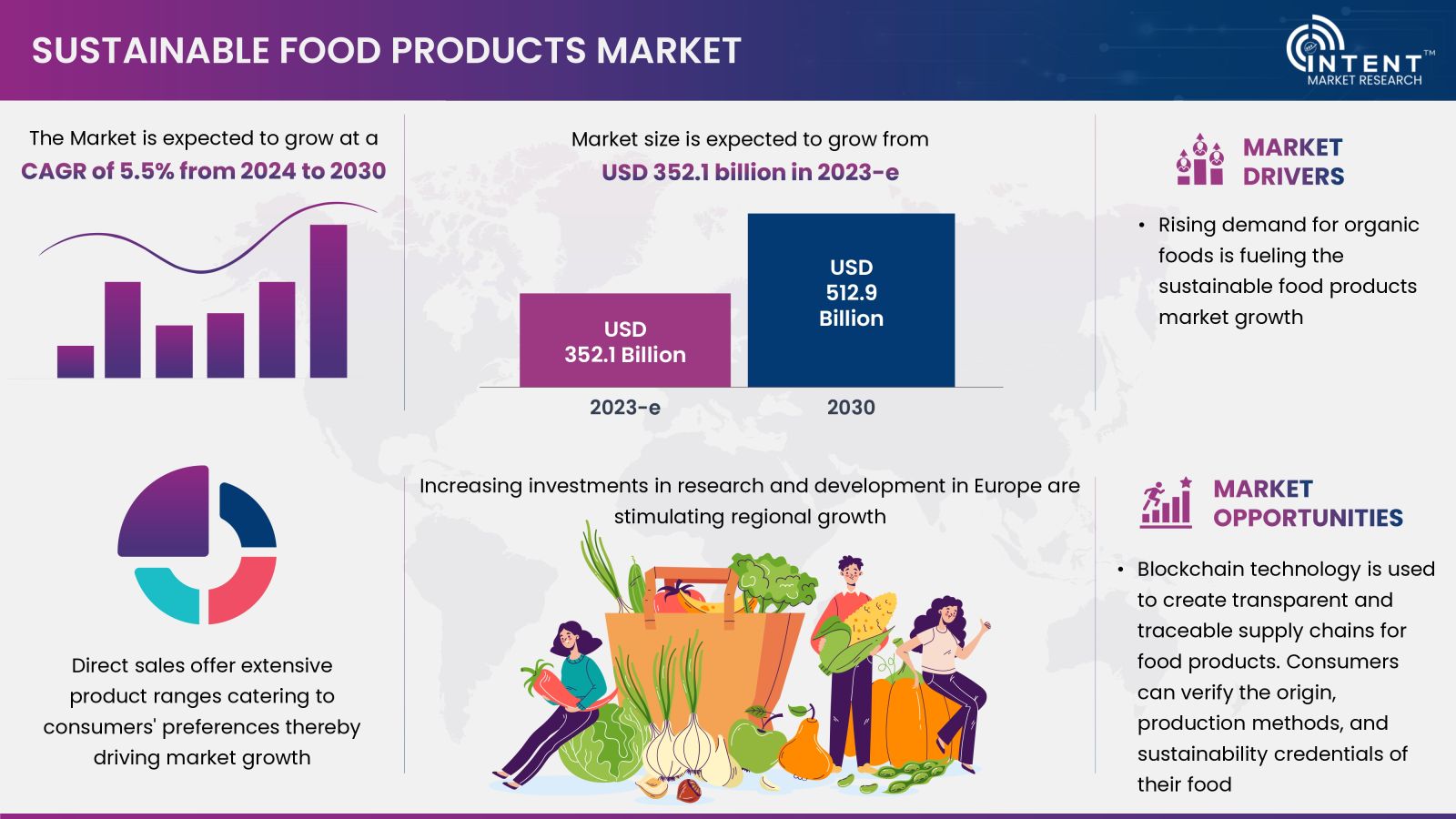
Click here to: Get FREE Sample Pages of this Report
The world is undoubtedly shifting towards environmental sustainability, and the food industry is no exception. Sustainable food products are those produced using environmentally favorable practices with minimal environmental impact. Organic farming, a notable innovation, emphasizes natural fertilizers, crop rotation, and pest control techniques to generate healthier and more nutritious food for consumers while benefiting the environment. Industries beyond food, such as hospitality are increasingly integrating sustainable food practices, recognizing their significance.
Sustainable Food Products Market Dynamics
Rising Demand for Organic Foods Is Fueling the Sustainable Food Products Market Growth
Consumers are becoming more conscious about their food choices and the environmental impact of their consumption patterns. There's a growing demand for food products that are organic, locally sourced and produced sustainably. Health concerns and an increased focus on wellness have driven the demand for organic and natural food options. Many consumers perceive sustainable foods as healthier alternatives.
Initiatives such as Amy's Kitchen, a pizza production outlet in California to expand its business of organic food products is projected to fuel the sustainable foods market growth. Consumers prioritize products free of pesticides, synthetic fertilizers, and GMOs, and businesses must meet these demands by implementing ethical and sustainable farming practices such as regenerative agriculture, permaculture, and integrated pest management. These practices help to prevent soil erosion, improve water and air quality, promote biodiversity, and prioritize animal welfare.
Sustainable Food Products Market Segmental Insights
The Organic Food Products Segment is Constantly Evolving Due to Increasing Demand From Customers
Organic food dominates the sustainable food products industry. It offers a range of products that are produced without synthetic pesticides, GMOs, antibiotics, or hormones, making them the ideal choice for health and environmentally-conscious consumers. The surge in demand for organic food is due to growing consumer awareness of the impact of food choices.
Emerging economies such as India, China, and Brazil are driving market growth, with consumers shifting towards healthier and eco-friendly food options. Social media and greater access to information have contributed to consumer education about organic food benefits. The growing concern about the environmental impact of conventional agriculture has further boosted demand for organic food. The organic food market is the future of sustainable food, and its dominance is set to continue during the forthcoming years.
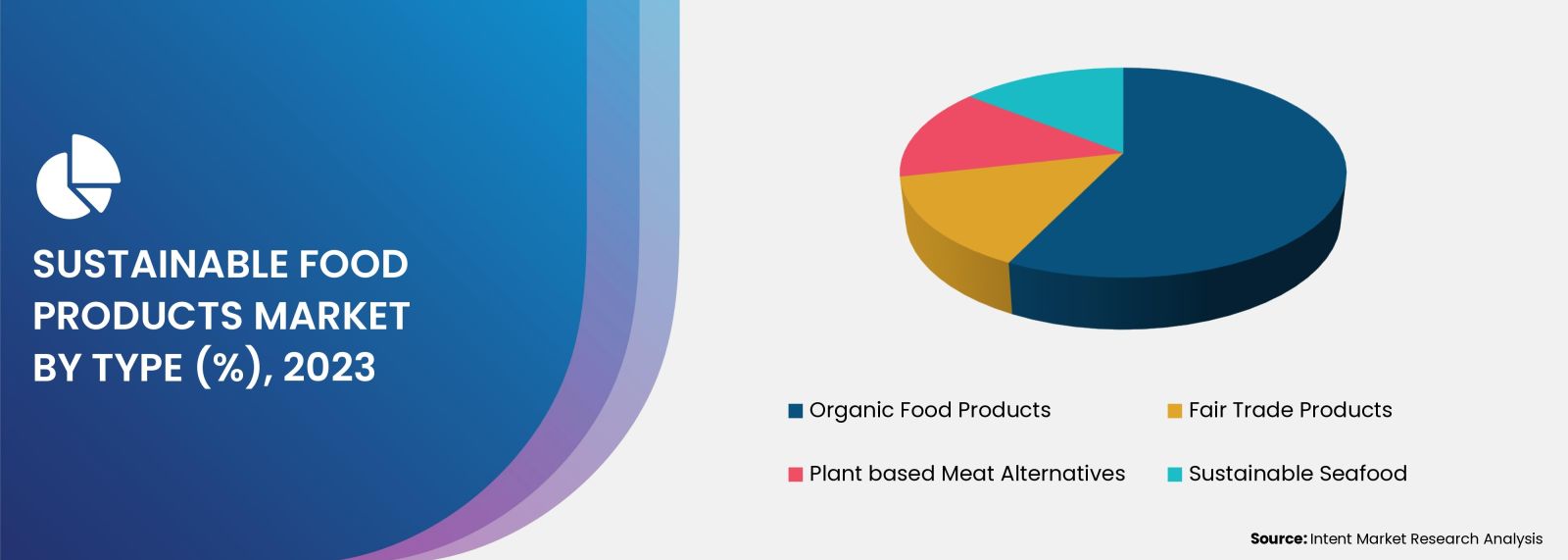
Organic Farming Promote the production Of Environmentally Friendly and Socially Responsible Food Products
Organic farming is a key component of sustainable agriculture that promotes environment friendly and socially responsible food production. It drives the sustainable food products market through practices that prioritize soil health, reduce chemical use, promote biodiversity, and support local and small-scale farming. Organic farming aligns with the principles of environmental responsibility, health and nutrition, making it a significant contributor to the sustainable food products market's growth and success.
Direct Sales Offer Extensive Product Ranges Catering to Consumers' Preferences Thereby Driving Market Growth
Direct sales dominate the distribution channels of sustainable food products. Supermarket, hypermarket, Food Cooperatives (Co-ops) offer extensive product ranges, including organic and sustainable food products, with accessibility and convenience. The dominance of emerging economies is largely influenced by their economic growth, driven by their ability to meet evolving consumer preferences and needs. Eco-friendly and sustainable food product choices, coupled with competitive pricing and special offers, broaden the appeal of these establishments to a wider consumer audience.
Regional Insights
Increasing Investments in Research & Development In Europe are Stimulating Regional Growth
Europe leads the sustainable food products market due to its emphasis on organic farming, environmentally conscious approaches, and stringent regulations. With an abundance of organic farms, Europe provides a wide range of dietary options for environmentally conscious consumers. The region also encourages sustainable practices beyond agriculture, such as reducing food waste, supporting local food systems, and promoting environmentally responsible packaging solutions. To maintain its leading position, Europe invests in research and development while supporting innovative food production startups.
Competitive Landscape
The Merger & acquisition and product Innovations are the Key Strategies Adopted By Major Market Players
The market for sustainable food products is characterized by intense competition due to the presence of numerous international and domestic players Such as Amy’s Kitchen, Aeon Co., Unilever, Organic Valley, Conagra Brands, Hain Celestial, General Mills, TESCO, Waitrose & Partners, Maple Leaf Foods, Beyond Meat, Impossible Foods, The Kraft Heinz Company, REWE Group, Danone, Bimbo Group, Ingredion, Kellogg, Mars Incorporated. The organic food and beverage market, in particular, is dominated by key players such as Conagra Brands, Amy's Kitchen, Danone, General Mills, and The Hain Celestial Group. In August 2022, Danone has acquired Happy Family which offers a range of organic products, including baby food.
Click here to: Get your custom research report today
Sustainable Food Products Market Coverage
The report provides key insights into the sustainable food products market, and it focuses on technological developments, trends, and initiatives taken by the government in this sector. The analysis focuses on market drivers, constraints, opportunities, and other pertinent factors. It also conducts an examination of key players and the competitive landscape within the sustainable food products market.

Report Scope
|
Report Features |
Description |
|
Market Value (2023-e) |
USD 352.1 billion |
|
Forecast Revenue (2030) |
USD 512.9 billion |
|
CAGR (2024-2030) |
5.5% |
|
Base Year for Estimation |
2023-e |
|
Historic Year |
2022 |
|
Forecast Period |
2024-2030 |
|
Report Coverage |
Revenue Forecast, Market Dynamics, Competitive Landscape, Recent Developments |
|
Segments Covered |
By Type (Organic Food Products, Fair Trade Products, Plant-Based Meat Alternatives, Sustainable Seafood), by Production Method (Organic Farming and Regenerative Agriculture), by Distribution Channel (Direct Sales and Indirect Sales) |
|
Regional Analysis |
North America (US, Canada), Europe (Germany, France, UK, Spain, Italy), Asia-Pacific (China, Japan, South Korea, India), Latin America (Brazil, Mexico, Argentina), Middle East & Africa (Saudi Arabia, South Africa, Turkey, United Arab Emirates) |
|
Competitive Landscape |
Amy's Kitchen, Aeon Co., Unilever, Organic Valley, Conagra Brands, Hain Celestial, General Mills, TESCO, Waitrose & Partners, Maple Leaf Foods, Beyond Meat, Impossible Foods, The Kraft Heinz Company, REWE Group, Danone, Bimbo Group, Ingredion, Kellogg, Mars Incorporated |
|
Customization Scope |
Customization for segments, region/country-level will be provided. Moreover, additional customization can be done based on the requirements. |
|
Purchase Options |
We have three licenses to opt for Single User License, Multi-User License (Up to 5 Users), Corporate Use License (Unlimited User and Printable PDF) |
|
1. Introduction |
|
1. 1. Study Assumptions and Sustainable Food Products Market Definition |
|
1.2. Scope of the Study |
|
2. Research Methodology |
|
3. Executive Summary |
|
4. Sustainable Food Products Market Dynamics |
|
4.1. Market Growth Drivers |
|
4.2 Market Growth Challenges |
|
5. Sustainable Food Products Market Outlook |
|
5.1. Supply Chain & Food Losses in the Supply Chain Overview |
|
5.2 Environmental Impact of Food Across the World |
|
5.3. Impact of Inflation on the Food Industry |
|
5.4 Consumer Purchasing Behaviors Analysis |
|
5.5. Sustainable Food Products Market Opportunity & Funding Analysis |
|
5.6. Regulatory Framework |
|
5.7. Porter’s Five Forces Analysis |
|
5.9. Impact of COVID-19 on the Sustainable Food Products Market 5.10 Pestle Analysis |
|
6. Global Sustainable Food Products Market Segmentation (Market Size & Forecast: USD Billion, 2024 – 2030) |
|
6.1 Production Method |
|
6.1.1 Organic Farming |
|
6.1.2 Regenerative Agriculture |
|
6.2 Type |
|
6.2.1 Organic Food Products |
|
6.2.2 Fair Trade Products |
|
6.2.3 Plant-Based Meat Alternatives |
|
6.2.4 Sustainable Seafood |
|
6.3 Distribution Channel |
|
6.3.1 Direct Sales |
|
6.1.2 Online Sales |
|
6.4 Region |
|
6.4.1 North America |
|
6.4.2 Europe |
|
6.4.3 Asia-Pacific |
|
6.4.4 Latin America |
|
6.4.5 Middle East and Africa |
|
7. North America Sustainable Food Products Market Segmentation (Market Size & Forecast: USD Billion, 2024 – 2030) |
|
7.1 Production Method |
|
7.1.1 Organic Farming |
|
7.1.2 Regenerative Agriculture |
|
7.2 Type |
|
7.2.1 Organic Food Products |
|
7.2.2 Fair Trade Products |
|
7.2.3 Plant-Based Meat Alternatives |
|
7.2.4 Sustainable Seafood |
|
7.3 Distribution Channel |
|
7.3.1 Direct Sales |
|
7.1.2 Online Sales |
|
7.4 Country |
|
7.4.1 United States |
|
7.4.1.1 Production Method |
|
7.4.1.1.1 Organic Farming |
|
7.4.1.1.2 Regenerative Agriculture |
|
7.4.1.2 Type |
|
7.4.1.2.1 Organic Food Products |
|
7.4.1.2.2 Fair Trade Products |
|
7.4.1.2.3 Plant-Based Meat Alternatives |
|
7.4.1.2.4 Sustainable Seafood |
|
7.4.1.3 Distribution Channel |
|
7.4.1.3.1 Direct Sales |
|
7.4.1.3.2 Online Sales |
|
7.4.2 Canada |
|
7.4.2.1 Production Method |
|
7.4.2.1.1 Organic Farming |
|
7.4.2.1.2 Regenerative Agriculture |
|
7.4.2.2 Type |
|
7.4.2.2.1 Organic Food Products |
|
7.4.2.2.2 Fair Trade Products |
|
7.4.2.2.3 Plant-Based Meat Alternatives |
|
7.4.2.2.4 Sustainable Seafood |
|
7.4.2.3 Distribution Channel |
|
7.4.2.3.1 Direct Sales |
|
7.4.2.3.2 Online Sales |
|
8. Europe Sustainable Food Products Market Segmentation (Market Size & Forecast: USD Billion, 2024 – 2030) |
|
8.1 Production Method |
|
8.1.1 Organic Farming |
|
8.1.2 Regenerative Agriculture |
|
8.2 Type |
|
8.2.1 Organic Food Products |
|
8.2.2 Fair Trade Products |
|
8.2.3 Plant-Based Meat Alternatives |
|
8.2.4 Sustainable Seafood |
|
8.3 Distribution Channel |
|
8.3.1 Direct Sales |
|
8.1.2 Online Sales |
|
8.4 Country |
|
8.4.1 United Kingdom |
|
8.4.1.1 Production Method |
|
8.4.1.1.1 Organic Farming |
|
8.4.1.1.2 Regenerative Agriculture |
|
8.4.1.2 Type |
|
8.4.1.2.1 Organic Food Products |
|
8.4.1.2.2 Fair Trade Products |
|
8.4.1.2.3 Plant-Based Meat Alternatives |
|
8.4.1.2.4 Sustainable Seafood |
|
8.4.1.3 Distribution Channel |
|
8.4.1.3.1 Direct Sales |
|
8.4.1.3.2 Online Sales |
|
8.4.2 France |
|
8.4.2.1 Production Method |
|
8.4.2.1.1 Organic Farming |
|
8.4.2.1.2 Regenerative Agriculture |
|
8.4.2.2 Type |
|
8.4.2.2.1 Organic Food Products |
|
8.4.2.2.2 Fair Trade Products |
|
8.4.2.2.3 Plant-Based Meat Alternatives |
|
8.4.2.2.4 Sustainable Seafood |
|
8.4.2.3 Distribution Channel |
|
8.4.2.3.1 Direct Sales |
|
8.4.2.3.2 Online Sales |
|
8.4.3 Germany |
|
8.4.3.1 Production Method |
|
8.4.3.1.1 Organic Farming |
|
8.4.3.1.2 Regenerative Agriculture |
|
8.4.3.2 Type |
|
8.4.3.2.1 Organic Food Products |
|
8.4.3.2.2 Fair Trade Products |
|
8.4.3.2.3 Plant-Based Meat Alternatives |
|
8.4.3.2.4 Sustainable Seafood |
|
8.4.3.3 Distribution Channel |
|
8.4.3.3.1 Direct Sales |
|
8.4.3.3.2 Online Sales |
|
8.4.4 Italy |
|
8.4.4.1 Production Method |
|
8.4.4.1.1 Organic Farming |
|
8.4.4.1.2 Regenerative Agriculture |
|
8.4.4.2 Type |
|
8.4.4.2.1 Organic Food Products |
|
8.4.4.2.2 Fair Trade Products |
|
8.4.4.2.3 Plant-Based Meat Alternatives |
|
8.4.4.2.4 Sustainable Seafood |
|
8.4.4.3 Distribution Channel |
|
8.4.4.3.1 Direct Sales |
|
8.4.4.3.2 Online Sales |
|
9. Asia-Pacific Sustainable Food Products Market Segmentation (Market Size & Forecast: USD Billion, 2024 – 2030) |
|
9.1 Production Method |
|
9.1.1 Organic Farming |
|
9.1.2 Regenerative Agriculture |
|
9.2 Type |
|
9.2.1 Organic Food Products |
|
9.2.2 Fair Trade Products |
|
9.2.3 Plant-Based Meat Alternatives |
|
9.2.4 Sustainable Seafood |
|
9.3 Distribution Channel |
|
9.3.1 Direct Sales |
|
9.1.2 Online Sales |
|
9.4 Country |
|
9.4.1 China |
|
9.4.1.1 Production Method |
|
9.4.1.1.1 Organic Farming |
|
9.4.1.1.2 Regenerative Agriculture |
|
9.4.1.2 Type |
|
9.4.1.2.1 Organic Food Products |
|
9.4.1.2.2 Fair Trade Products |
|
9.4.1.2.3 Plant-Based Meat Alternatives |
|
9.4.1.2.4 Sustainable Seafood |
|
9.4.1.3 Distribution Channel |
|
9.4.1.3.1 Direct Sales |
|
9.4.1.3.2 Online Sales |
|
9.4.2 India |
|
9.4.2.1 Production Method |
|
9.4.2.1.1 Organic Farming |
|
9.4.2.1.2 Regenerative Agriculture |
|
9.4.2.2 Type |
|
9.4.2.2.1 Organic Food Products |
|
9.4.2.2.2 Fair Trade Products |
|
9.4.2.2.3 Plant-Based Meat Alternatives |
|
9.4.2.2.4 Sustainable Seafood |
|
9.4.2.3 Distribution Channel |
|
9.4.2.3.1 Direct Sales |
|
9.4.2.3.2 Online Sales |
|
9.4.3 Japan |
|
9.4.3.1 Production Method |
|
9.4.3.1.1 Organic Farming |
|
9.4.3.1.2 Regenerative Agriculture |
|
9.4.3.2 Type |
|
9.4.3.2.1 Organic Food Products |
|
9.4.3.2.2 Fair Trade Products |
|
9.4.3.2.3 Plant-Based Meat Alternatives |
|
9.4.3.2.4 Sustainable Seafood |
|
9.4.3.3 Distribution Channel |
|
9.4.3.3.1 Direct Sales |
|
9.4.3.3.2 Online Sales |
|
9.4.4 South Korea |
|
9.4.4.1 Production Method |
|
9.4.4.1.1 Organic Farming |
|
9.4.4.1.2 Regenerative Agriculture |
|
9.4.4.2 Type |
|
9.4.4.2.1 Organic Food Products |
|
9.4.4.2.2 Fair Trade Products |
|
9.4.4.2.3 Plant-Based Meat Alternatives |
|
9.4.4.2.4 Sustainable Seafood |
|
9.4.4.3 Distribution Channel |
|
9.4.4.3.1 Direct Sales |
|
9.4.4.3.2 Online Sales |
|
10. Latin America Sustainable Food Products Market Segmentation (Market Size & Forecast: USD Billion, 2024 – 2030) |
|
10.1 Production Method |
|
10.1.1 Organic Farming |
|
10.1.2 Regenerative Agriculture |
|
10.2 Type |
|
10.2.1 Organic Food Products |
|
10.2.2 Fair Trade Products |
|
10.2.3 Plant-Based Meat Alternatives |
|
10.2.4 Sustainable Seafood |
|
10.3 Distribution Channel |
|
10.3.1 Direct Sales |
|
10.1.2 Online Sales |
|
10.4 Country |
|
10.4.1 Brazil |
|
10.4.1.1 Production Method |
|
10.4.1.1.1 Organic Farming |
|
10.4.1.1.2 Regenerative Agriculture |
|
10.4.1.2 Type |
|
10.4.1.2.1 Organic Food Products |
|
10.4.1.2.2 Fair Trade Products |
|
10.4.1.2.3 Plant-Based Meat Alternatives |
|
10.4.1.2.4 Sustainable Seafood |
|
10.4.1.3 Distribution Channel |
|
10.4.1.3.1 Direct Sales |
|
10.4.1.3.2 Online Sales |
|
10.4.3 Argentina |
|
10.4.3.1 Production Method |
|
10.4.3.1.1 Organic Farming |
|
10.4.3.1.2 Regenerative Agriculture |
|
10.4.3.2 Type |
|
10.4.3.2.1 Organic Food Products |
|
10.4.3.2.2 Fair Trade Products |
|
10.4.3.2.3 Plant-Based Meat Alternatives |
|
10.4.3.2.4 Sustainable Seafood |
|
10.4.3.3 Distribution Channel |
|
10.4.3.3.1 Direct Sales |
|
10.4.3.3.2 Online Sales |
|
11. Middle East & Africa Sustainable Food Products Market Segmentation (Market Size & Forecast: USD Billion, 2024 – 2030) |
|
11.1 Production Method |
|
11.1.1 Organic Farming |
|
11.1.2 Regenerative Agriculture |
|
11.2 Type |
|
11.2.1 Organic Food Products |
|
11.2.2 Fair Trade Products |
|
11.2.3 Plant-Based Meat Alternatives |
|
11.2.4 Sustainable Seafood |
|
11.2.5 Others |
|
11.3 Distribution Channel |
|
11.3.1 Direct Sales |
|
11.1.2 Online Sales |
|
11.4 Country |
|
11.4.1 United Arab Emirates |
|
11.4.1.1 Production Method |
|
11.4.1.1.1 Organic Farming |
|
11.4.1.1.2 Regenerative Agriculture |
|
11.4.1.2 Type |
|
11.4.1.2.1 Organic Food Products |
|
11.4.1.2.2 Fair Trade Products |
|
11.4.1.2.3 Plant-Based Meat Alternatives |
|
11.4.1.2.4 Sustainable Seafood |
|
11.4.1.3 Distribution Channel |
|
11.4.1.3.1 Direct Sales |
|
11.4.1.3.2 Online Sales |
|
11.4.2 Saudi Arabia |
|
11.4.2.1 Production Method |
|
11.4.2.1.1 Organic Farming |
|
11.4.2.1.2 Regenerative Agriculture |
|
11.4.2.2 Type |
|
11.4.2.2.1 Organic Food Products |
|
11.4.2.2.2 Fair Trade Products |
|
11.4.2.2.3 Plant-Based Meat Alternatives |
|
11.4.2.2.4 Sustainable Seafood |
|
11.4.2.3 Distribution Channel |
|
11.4.2.3.1 Direct Sales |
|
11.4.2.3.2 Online Sales |
|
11.4.3 South Africa |
|
11.4.3.1 Production Method |
|
11.4.3.1.1 Organic Farming |
|
11.4.3.1.2 Regenerative Agriculture |
|
11.4.3.2 Type |
|
11.4.3.2.1 Organic Food Products |
|
11.4.3.2.2 Fair Trade Products |
|
11.4.3.2.3 Plant-Based Meat Alternatives |
|
11.4.3.2.4 Sustainable Seafood |
|
11.4.3.3 Distribution Channel |
|
11.4.3.3.1 Direct Sales |
|
11.4.3.3.2 Online Sales |
|
12. Competitive Landscape |
|
12.1 Company Market Share Analysis |
|
12.2 Competitive Matrix |
|
12.3 Product Benchmarking |
|
12.4 Company Profiles |
|
12.4.1 Aeon Co. 12.4.1.1 Company Synopsis 12.4.1.2 Company Financials 12.4.1.3 Product/ Service Portfolio 12.4.1.4 Recent Developments |
|
12.4.2 Amy's Kitchen |
|
12.4.3 Beyond Meat |
|
12.4.4 Conagra Brands |
|
12.4.5 Danone |
|
12.4.6 General Mills |
|
12.4.7 Hain Celestial |
|
12.4.8 Impossible Foods |
|
12.4.9 Kellogg |
|
12.4.10 Maple Leaf Foods |
|
12.4.11 Organic Valley |
|
12.4.12 TESCO |
|
12.4.13 The Kraft Heinz Company |
|
12.4.14 REWE Group |
|
12.4.15 Unilever |
|
12.4.16 Waitrose & Partners |
|
13. Analyst Recommendations |
Let us connect with you TOC
Intent Market Research employs a rigorous methodology to minimize residual errors by carefully defining the scope, validating findings through primary research, and consistently updating our in-house database. This dynamic approach allows us to capture ongoing market fluctuations and adapt to evolving market uncertainties.
The research factors used in our methodology vary depending on the specific market being analyzed. To begin with, we incorporate both demand and supply side information into our model to identify and address market gaps. Additionally, we also employ approaches such as Macro-Indicator Analysis, Factor Analysis, Value Chain-Based Sizing, and forecasting to further increase the accuracy of the numbers and validate the findings.
Research Approach
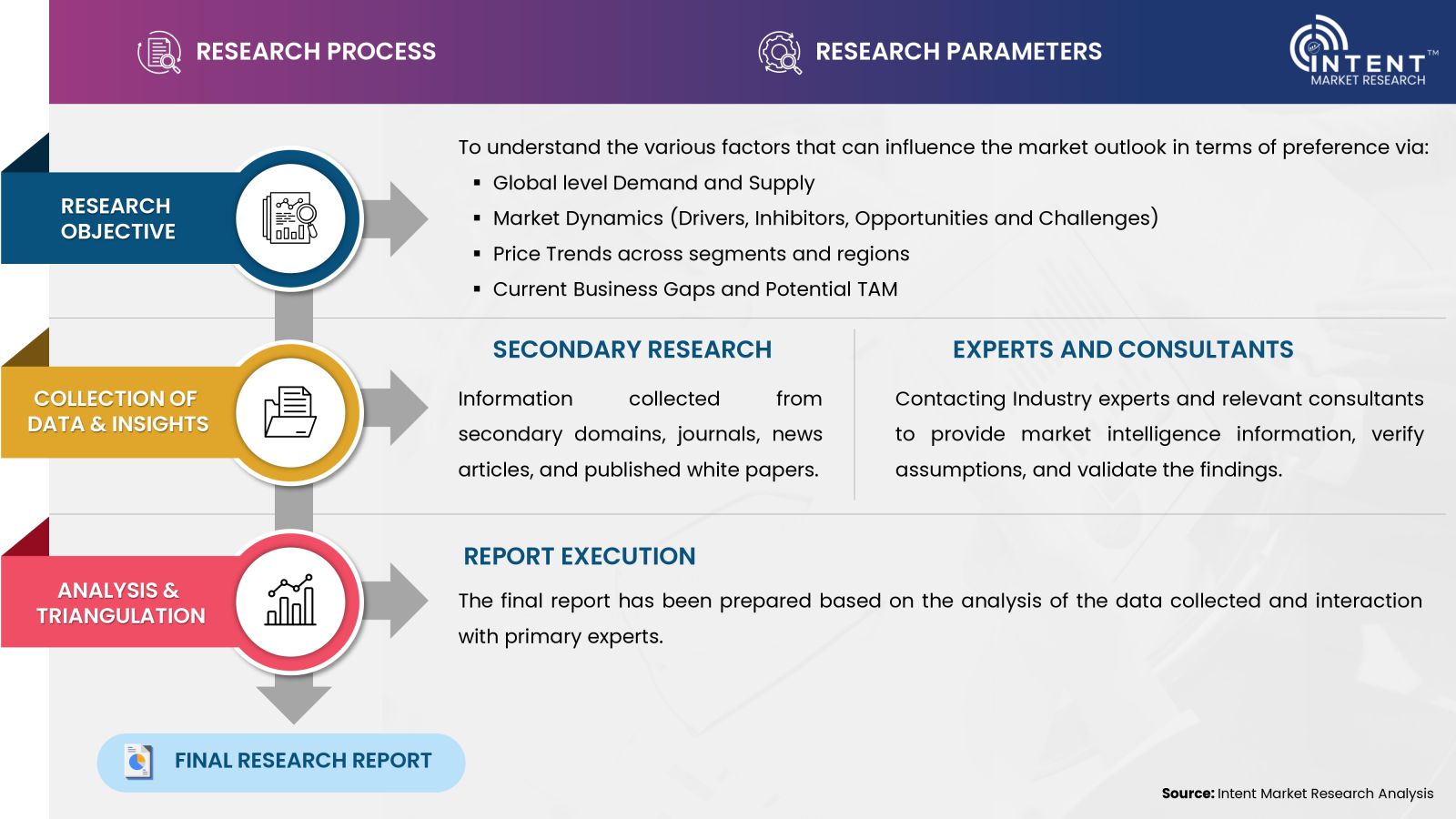
- Secondary Research Approach: During the initial phase of the research process, we acquire and accumulate extensive data continuously. This data is carefully filtered and validated through a variety of secondary sources.
- Primary Research Approach: Following the consolidation of data gathered through secondary research, we initiate a validation process to verify all the market numbers, and assumptions and validate the findings by engaging with subject matter experts.
Data Collection, Analysis and Interpretation:
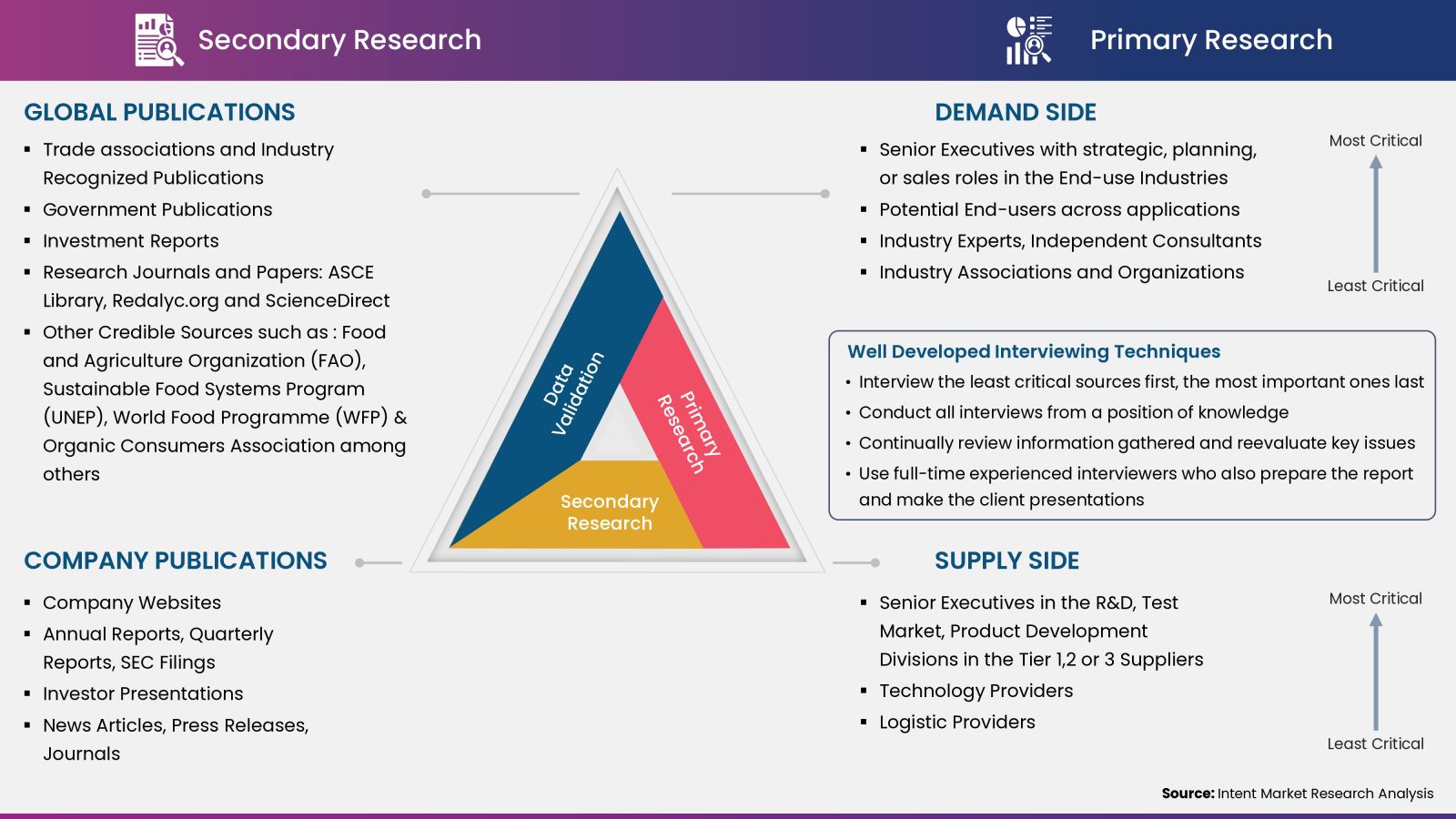
Research Methodology
Our market research methodology utilizes both top-down and bottom-up approaches to segment and estimate quantitative aspects of the market. We also employ multi-perspective analysis, examining the market from distinct viewpoints.
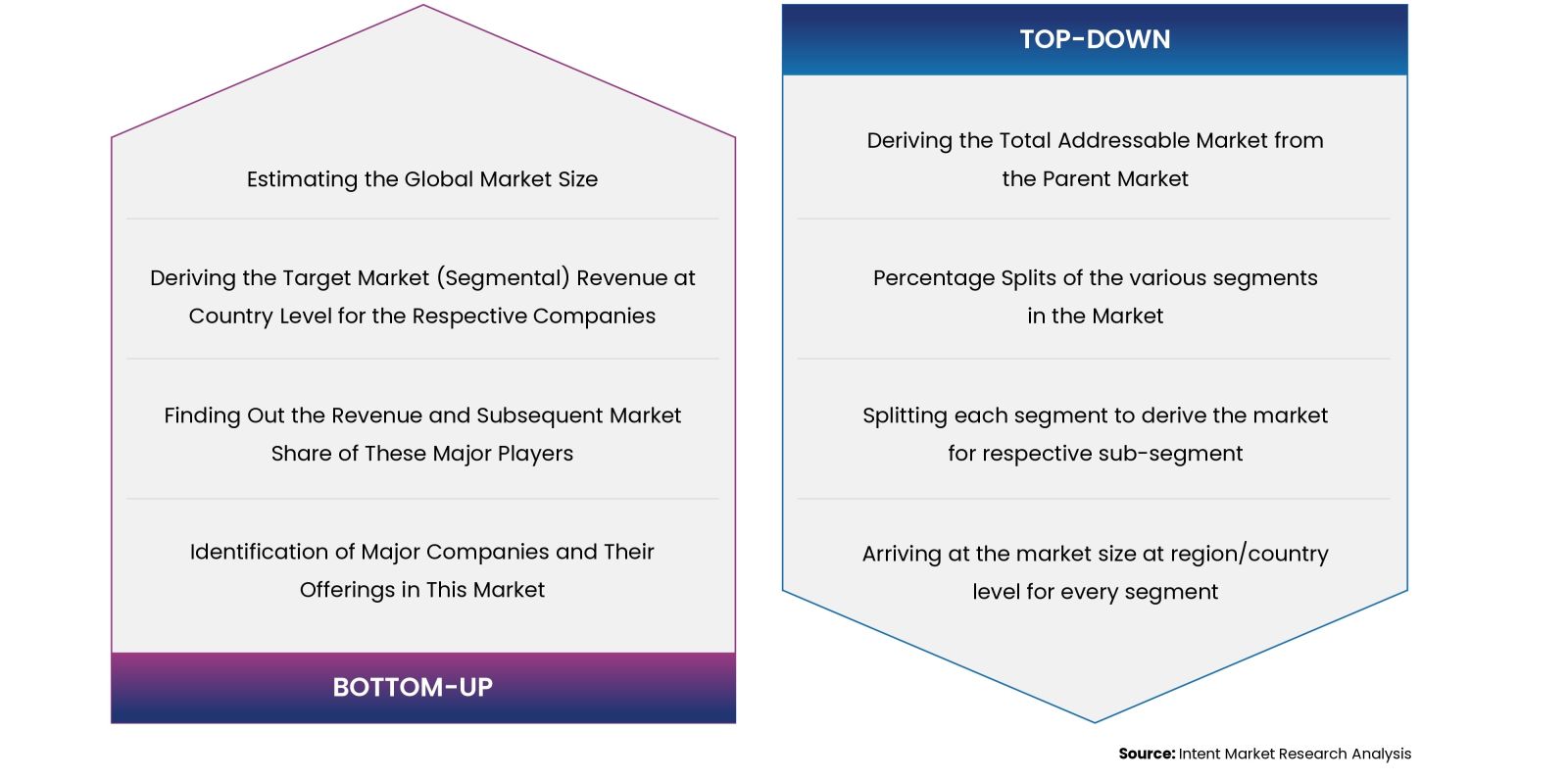
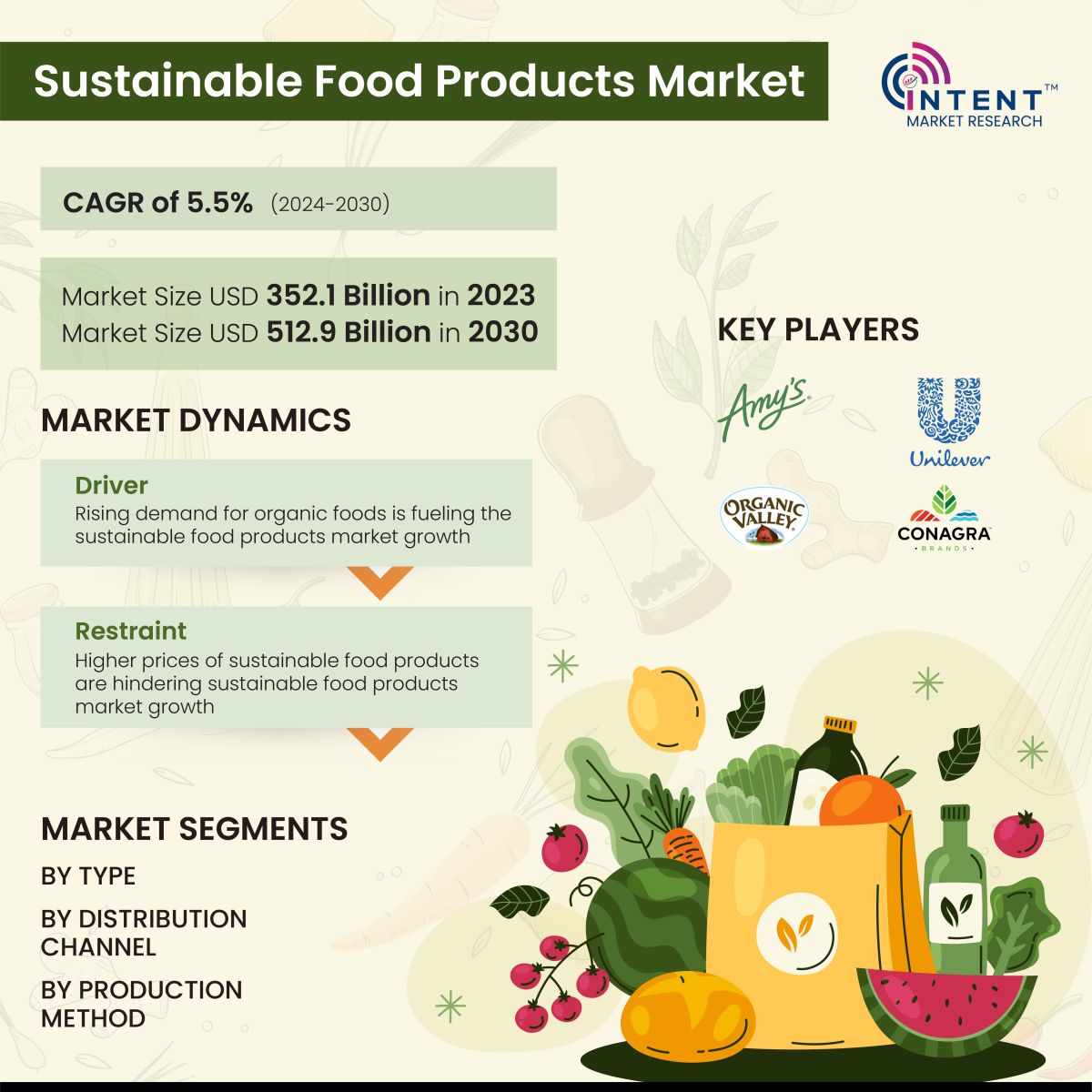
Available Formats


